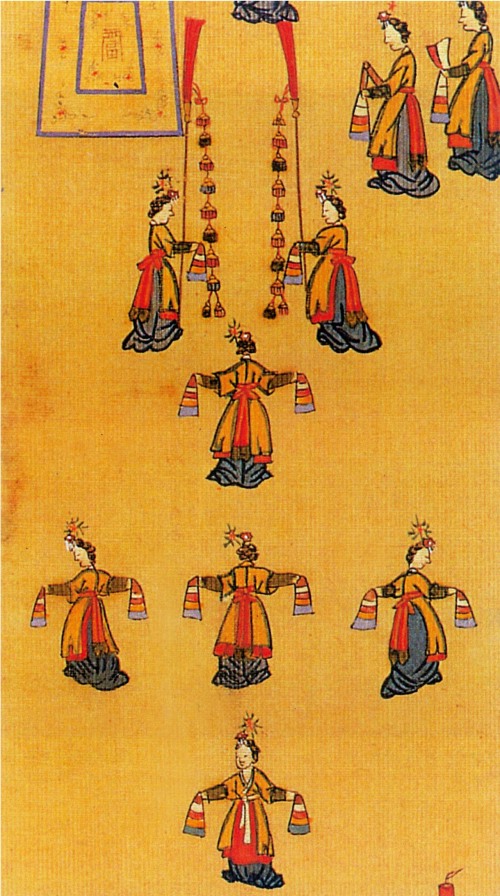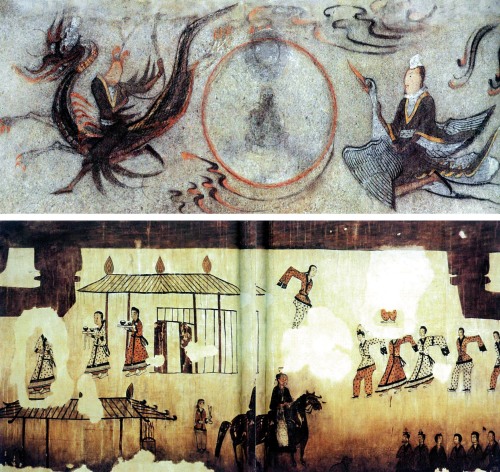Korea Foundation translates book by master Lee Heung-gu
Among many intangible cultural assets of Korea, traditional court dance “Jeongjae” has a long history. From the Three Kingdoms period (37 B.C. 668 AD) to Goryeo (918 1392) and Joseon (1392 1910) dynasties, the dance moves carried traditions and values of the Korean royal culture.
Korea Foundation’s newly released book, “Korean Court Dance: As Seen in Historical Documents,” chronicles the rich history of the intangible cultural asset, including the foreign influence shown in the dance moves, the movements’ embedded Yin and Yang and the five elements (water, wood, fire, earth, and metal) philosophy, and notably significant routines of the dance.
Though the Korean dance and music were heavily influenced by China and India during the Three Kingdoms period, Korea started to produce and refine its own principles and movements for the court dance during the late Joseon Dynasty. “Korean Court Dance” mainly focuses on Joseon’s dance movements, while chronologically introducing distinctive characteristics of the performing art from other time periods.
The book is written by Lee Heung-gu, title holder of Korea’s Important Intangible Cultural Property No. 40.
Originally written in Korean, the book has been translated into English by Cho Yoon-jung, a part-time lecturer at Ewha Womans University’s School of Translation and Interpretation.
Born in 1940 in Daejeon, Lee studied dance at Gugaksa Yangseongso, an academy for training in the traditional performing arts. One of his teachers was Kim Bo-nam, title holder of Important Intangible Cultural Property No. 1. Lee wrote the book after thoroughly researching historical documents that had recorded the dance movements, including “Uigwe,” a collection of books on royal protocols of the Joseon Dynasty. Uigwe, in particular, contains very vivid hand-drawn illustrations of the court dance movements, as they were performed during significant rites and ceremonies of the royal family.
According to Lee, the Korean court dance deals with six major themes: wishing for the longevity of the king; celebrating the anniversary of the king’s ascension to the throne; praising the virtues of the court; extolling the benevolent rule and politics of the king; blessings for the prosperity of the royal family; and wishing for the peace and prosperity of the nation.
Among many intangible cultural assets of Korea, traditional court dance “Jeongjae” has a long history. From the Three Kingdoms period (37 B.C. 668 AD) to Goryeo (918 1392) and Joseon (1392 1910) dynasties, the dance moves carried traditions and values of the Korean royal culture.
Korea Foundation’s newly released book, “Korean Court Dance: As Seen in Historical Documents,” chronicles the rich history of the intangible cultural asset, including the foreign influence shown in the dance moves, the movements’ embedded Yin and Yang and the five elements (water, wood, fire, earth, and metal) philosophy, and notably significant routines of the dance.
Though the Korean dance and music were heavily influenced by China and India during the Three Kingdoms period, Korea started to produce and refine its own principles and movements for the court dance during the late Joseon Dynasty. “Korean Court Dance” mainly focuses on Joseon’s dance movements, while chronologically introducing distinctive characteristics of the performing art from other time periods.
The book is written by Lee Heung-gu, title holder of Korea’s Important Intangible Cultural Property No. 40.
Originally written in Korean, the book has been translated into English by Cho Yoon-jung, a part-time lecturer at Ewha Womans University’s School of Translation and Interpretation.
Born in 1940 in Daejeon, Lee studied dance at Gugaksa Yangseongso, an academy for training in the traditional performing arts. One of his teachers was Kim Bo-nam, title holder of Important Intangible Cultural Property No. 1. Lee wrote the book after thoroughly researching historical documents that had recorded the dance movements, including “Uigwe,” a collection of books on royal protocols of the Joseon Dynasty. Uigwe, in particular, contains very vivid hand-drawn illustrations of the court dance movements, as they were performed during significant rites and ceremonies of the royal family.
According to Lee, the Korean court dance deals with six major themes: wishing for the longevity of the king; celebrating the anniversary of the king’s ascension to the throne; praising the virtues of the court; extolling the benevolent rule and politics of the king; blessings for the prosperity of the royal family; and wishing for the peace and prosperity of the nation.

While Goryeo’s court dance featured many Buddhism-inspired movements, Joseon, which chose Confucianism over Buddhism, displayed restrained and orderly movements that enforced the dancers to suppress their emotions.
The Korean court dance, in many ways, is different from the country’s traditional folk dance. As an art of the ordinary, the folk dance allowed improvisation and freedom for its dancers to express their emotions as much as they wanted. Yet the court dance had its own strict rules and fixed movements, developed in the royal court from the Chinese-inspired Silla period through the Joseon Dynasty. Lee introduces the 58 basic court dance movements, summarizing what’s described on the historical documents.

The eastern philosophy that refers to Yin and Yang and the five elements (water, wood, fire, earth, and metal) is deeply reflected in many movements of the Korean court dance. For every dance performance, the king would always sit in the north of the palace while facing south. The north represented water and the south represented fire. The lead dancer who represented the “Seonmo,” or “Mother Immortal,” would stand in the center of the site, while the west represented metal and the east symbolized wood. As a whole, the performance itself represented the ultimate harmony of the five elements.
The newly released book, along with other books published by Korea Foundation, will be distributed to various libraries and institutions overseas. It will also be available for sale for those interested in Korea. For more information, call (02) 2151-6529.
By Claire Lee (clairelee@heraldcorp.com)


















![[Today’s K-pop] Treasure to publish magazine for debut anniversary](http://res.heraldm.com/phpwas/restmb_idxmake.php?idx=642&simg=/content/image/2024/07/26/20240726050551_0.jpg&u=)